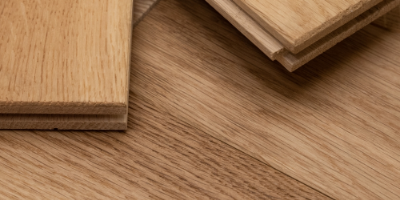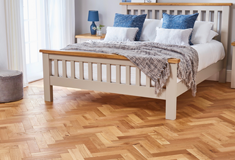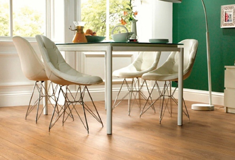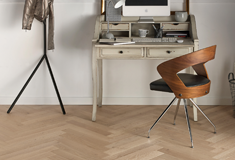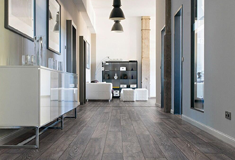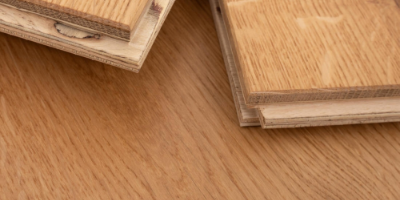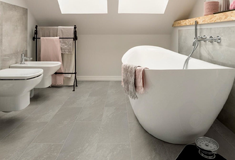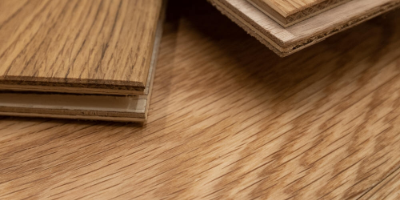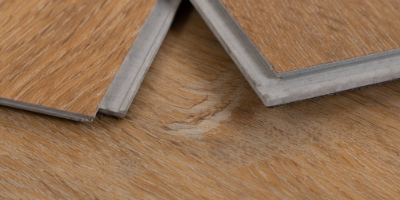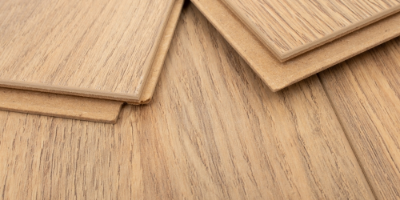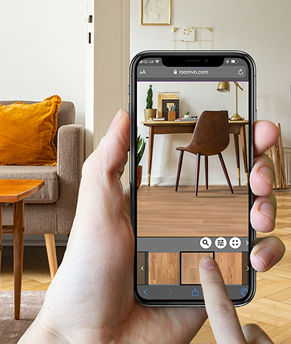LVT vs Laminate: Which is Best?
Choosing between vinyl and laminate flooring is difficult, as they’re both such great options!
One of the main benefits of both types of flooring is that they can replicate the appearance of pretty much any surface.
While you might not have the funds for a solid wood or marble floor, with LVT and laminate you can imitate it for a much more affordable price.
Laminate and Luxury Vinyl Tiles also have many practical benefits, making them a great option for busy homes.
But how do they compare against one another? Using our years of expertise we’ve put the two head to head to help you decide which is right for you - LVT or laminate?
What are LVT and laminate flooring made of?
LVT flooring is mostly made of PVC, while laminate flooring is made of HDF (high density fibreboard).
Luxury Vinyl Tiles and Laminate flooring both typically have four layers:
Backing layer
The base of the flooring contributes to around 90% of the floor’s thickness. It provides the backbone, and creates the structure and solidity that the flooring requires to be hardwearing.Design layer
The design layer gives the vinyl its all important appearance. It is made up of a photo-realistic print, to give the impression of wood or stone, depending on which look you choose.Clear layer
This is a protective layer that safeguards the floor against more serious damage such as rips or tears to the material.Protective wear layer
This is the last layer to be added and protects the floor from any surface scratches or scuffs. It tends to be made using an aluminium oxide solution.
How sustainable is LVT and laminate flooring?
In terms of being eco-friendly, vinyl flooring is made from PVC, which is of course a type of plastic. Laminate flooring is more eco-friendly as long as the HDF is sourced from well-managed forests, such as the type we use here for our wood flooring products.
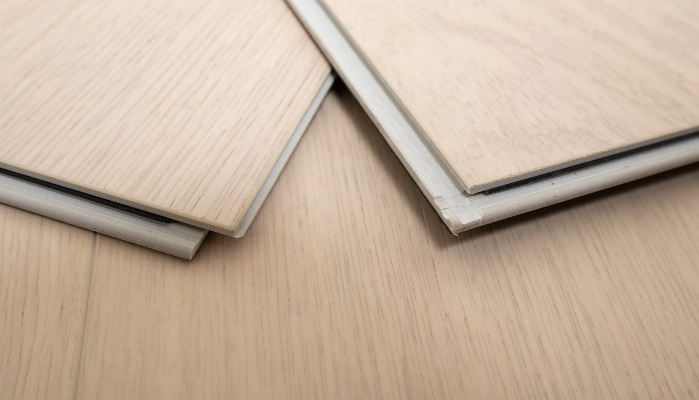
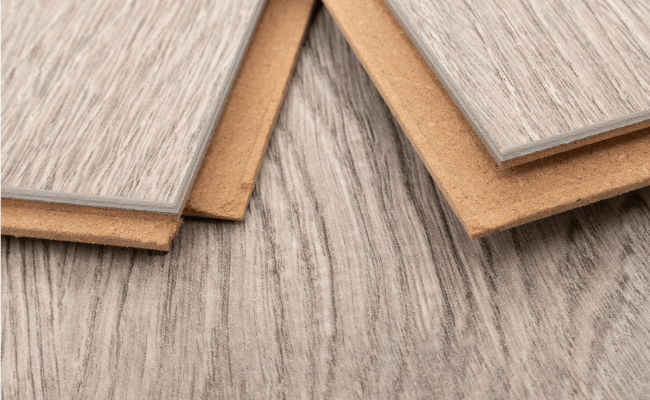
How easy are LVT and laminate to install?
Both LVT and laminate flooring are easy to install.
Most laminates use a ‘click system’, meaning the individual planks slot into each other to create your flooring. It can either be installed as a floating floor or glued down.
Vinyl tiles can also use a locking system, or can be loose-laid or glued down.
The simple installation method offered by both flooring types means that even the most amateur of DIYers can do it!
Are they waterproof?
Luxury Vinyl Tiles are fully waterproof, making them ideal for bathrooms and kitchens. Laminate flooring is splash resistant and can be installed in kitchen areas but is not always advisable for use in the bathroom.
There’s a lot of controversy surrounding laminate and its water resistance.
While we would definitely not say that all laminate flooring is waterproof, we’re confident it can handle spillages (as long as they’re not left to stand). However, if you want to install laminate in your bathroom or wetroom, our waterproof & water resistant laminate range has you covered!
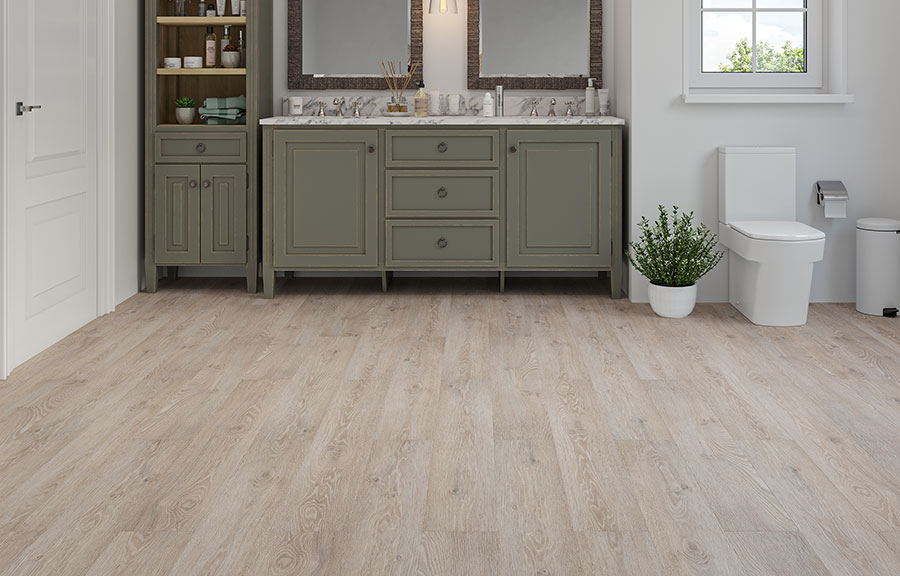
LVT vs laminate durability
Due to the way they’re constructed, Luxury Vinyl Tiles are incredibly durable and can last for up to 20 years.
Vinyl tiles are also entirely water resistant and don’t scratch or scuff easily, making them ideal for busy family homes.
Laminate flooring often comes with a 5 to 10 year warranty but usually lasts up to 15!
It’s renowned for being extremely resilient and is also scratch resistant, however we would recommend using protective measures such as felt pads or rugs to ensure your furniture does not damage the floor.
Laminate is also one of the most hygienic and easiest floors to clean, with just a daily sweep and weekly mop keeping it fresh and sparkling!
Can I use LVT or laminate with underfloor heating?
Both LVT and laminate flooring can be used with underfloor heating.
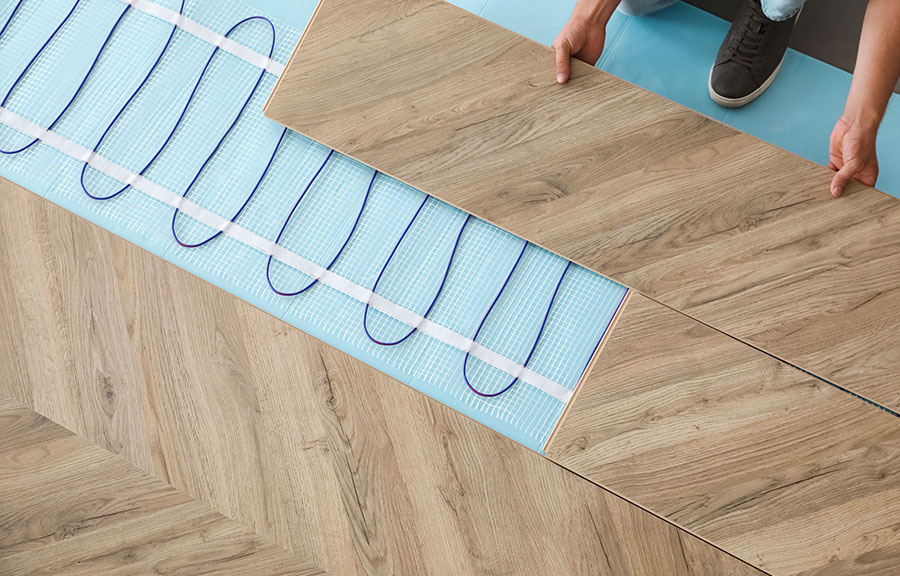
Summary
| LVT | Laminate | |
| Installation | Click (DIY-friendly) | Click (DIY-friendly) |
| Water effectiveness | Fully waterproof | Water resistant |
| Durability | Up to 20 years | Up to 15 years |
| Underfloor heating compatible | Yes | Yes |
| Materials | PVC | HDF |
Want to dive even deeper?
You can learn even more about LVT and laminate flooring in our flooring guides:

